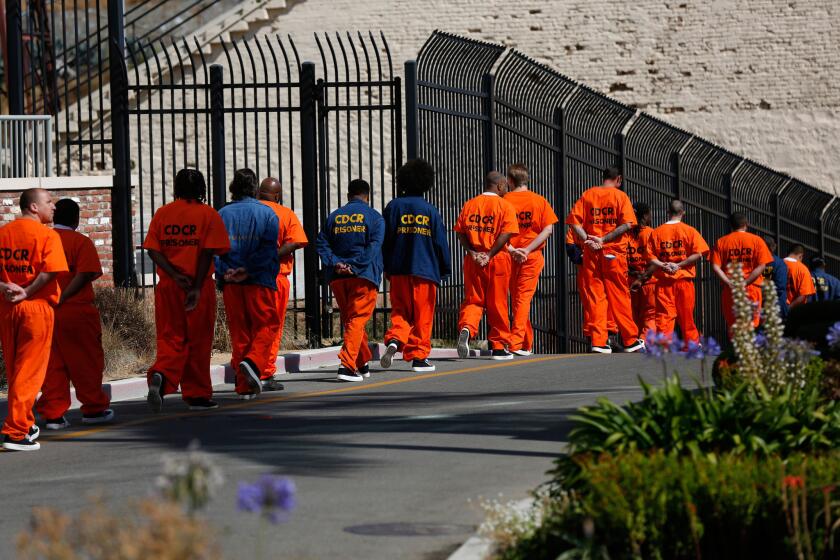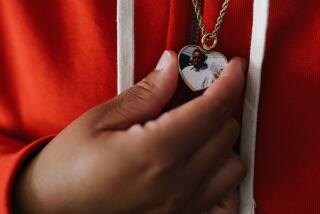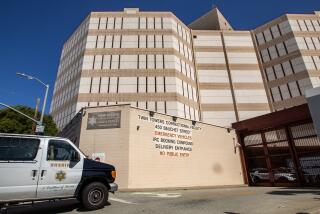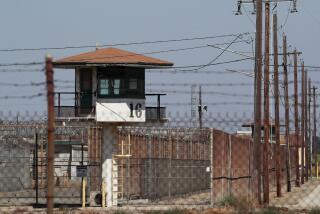Coronavirus outbreak at Lompoc prison is the worst in the nation: 69 inmates, 25 staff infected

After serving 27 years for selling cocaine in Alabama in the early 1990s, Efrem Stutson walked out of the federal penitentiary at Lompoc on April 1.
He was “looking forward to a new life, finding a job and seeing his kids,” said his sister, Lawanda Rangel. “He was happy the last time I spoke to him from there.”
But within hours of getting off a bus in San Bernardino, Stutson was hospitalized. Five days later, he was dead after contracting COVID-19.
Stutson was among 69 inmates and 25 staff members infected at Lompoc, the worst coronavirus outbreak in a federal prison in the U.S. The outbreak there is so severe that a field hospital is being constructed on the grounds, authorities said.
While about 450 federal inmates nationwide have tested positive for the novel coronavirus, the Lompoc penitentiary’s level of infection has far outpaced any other facility, according to the U.S. Bureau of Prisons.
Thirteen of the infected inmates have been hospitalized and two are now in intensive care, according to Santa Barbara County Public Health Officer Dr. Henning Ansorg. Of the 25 infected staffers, one is in the hospital, he said.
The medium-security facility houses about 1,500 inmates.
“The current outbreak at the federal prison in Lompoc and the problems at nursing homes across the nation represent the challenge,” he said of the spread of the virus in close quarters in institutional settings.
The latest California corrections workers who have tested positive for COVID-19 are two nurses at the state’s medical prison near Stockton.
“We are continuing to work cooperatively with the prison administration and its infection control team to limit the spread of the disease,” Ansorg said.
Of the 13 hospitalized inmates, five are at Santa Barbara’s Cottage Hospital and eight are at Lompoc Valley Medical Center. Six are on ventilators.
Van Do-Reynoso, Santa Barbara County’s public health director, said she has staff onsite to help contain the outbreak.
“With support from our federal, state and local officials, the Bureau of Prisons and other federal partners are working to stand up a field hospital within the prison grounds,” she said.
Federal judge says California could use private prisons to reduce coronavirus danger
The field hospital is expected to begin operating within two weeks with 11 beds and eventually expand to up to 100 beds for low- to medium-level patients.
Do-Reynoso said the field hospital “will prevent our local hospitals from being overwhelmed by patients and their accompanying security.” Inmates sent to civilian hospitals are guarded by two prison officers on rotating shifts.
Nationwide, 449 inmates had tested positive for the coronavirus as of Wednesday along with 280 Bureau of Prisons employees. Sixteen inmates have died of conditions related to COVID-19. Cloth masks have been issued to all inmates and protective gear to employees handling those infected, according to the bureau.
Guards, inmates and relatives across the country have criticized the bureau’s response to outbreaks at its facilities. On March 31, the agency implemented a strict policy of keeping inmates in their cells or assigned quarters for 14 days and barring transfers to limit the spread of the virus.
Santa Barbara County has so far seen 334 people test positive, with 38 hospitalized, two dead and 130 recovered.
Efrem Stutson became ill in his last days at Lompoc, his sister said, so sick that he could hardly talk. After another sister picked him up at the bus station in San Bernardino, they drove straight to a CVS for some medication.
“He could barely walk off the bus,” Rangel said. Within six hours, Stutson would be taken by paramedics to the Kaiser Medical Center in Fontana.
Rangel and Stutson’s other relatives would never see him alive. As a COVID-19 patient, Stutson’s family were not allowed to see him, she said.
“You know that doesn’t happen overnight. ... Why did they send him on that bus like that?” Rangel said.
Federal Bureau of Prisons standards require that an inmate’s health be checked for COVID-19 before release, and for health authorities to be informed if the inmate shows symptoms.
Bureau of Prisons officials did not respond to specific questions on Thursday.
“The irony of it all was he was finally free after 27 years. He was getting to celebrate the victory of getting his sentence justly reduced,” Rangel said.
Rangel said Stutson got a transfer to Lompoc about six months ago to be closer to his relatives when he was released and to build a new life in California. Stutson had been working in the prison’s kitchen when the outbreak there began.
“We are all trying to wrap our minds around the circumstances of his death,” she said “How did COVID-19 get into the prison?”
Stutson was 60 years old.
More to Read
Sign up for Essential California
The most important California stories and recommendations in your inbox every morning.
You may occasionally receive promotional content from the Los Angeles Times.












